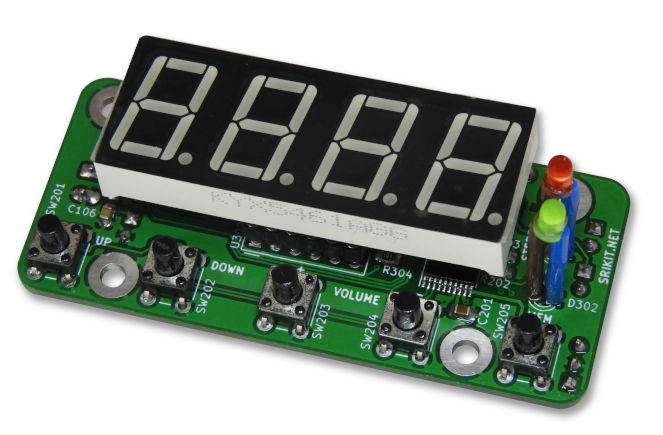This is an RDA5807M based FM stereo radio module. This module is designed to replace old, low-voltage, analog FM stereo radio receiver modules. Like many digital receivers, this module also got auto scanning, station memory, and digital volume control. This module can driver using 5V to 9V DC power source.
 |
| FM stereo receiver module with seven-segment display unit. |
The frequency range of the receiver is 88MHz to 108MHz. The auto scanner of this module can tune the receiver with 25kHz increments in up and down directions.
The memory manager available with the current firmware can hold up to 10 stations in MCU EEPROM.
 |
| Bottom side of the receiver module |
The dimensions of this module are 72.85mm × 32.0mm. With the seven-segment display, the depth of the assembled module is 37.5mm.
AF output power of this module is not sufficient to handle the pair of speakers. To drive speakers, this module needs to pair with a stereo AF power amplifier kit/module.
This is an open-source hardware project. All the design files, documentation, and firmware source code are available to download at the project source repository. The compiled binaries and PCB Gerber files are available in the release section of the GitHub repository.
Comments